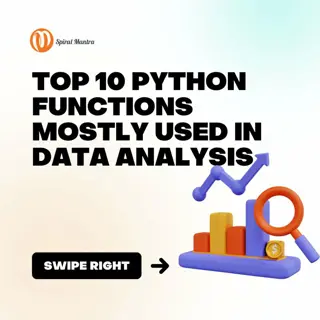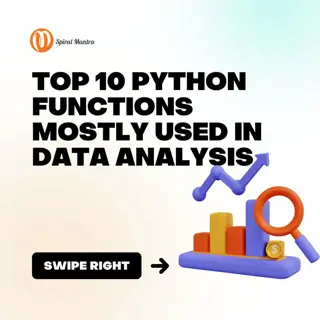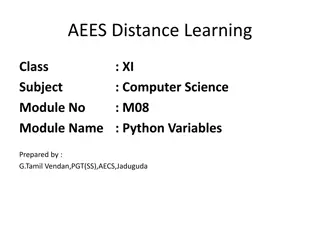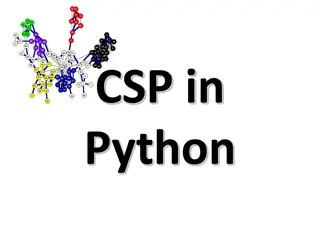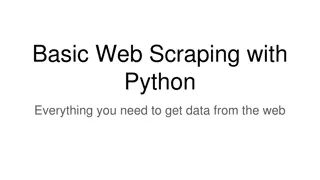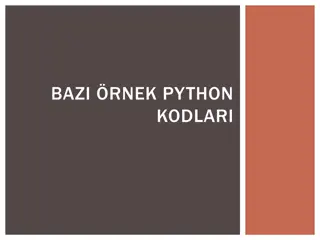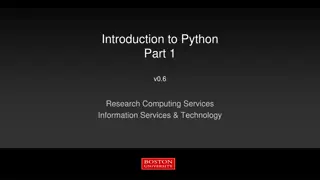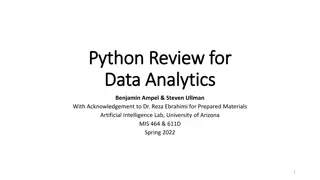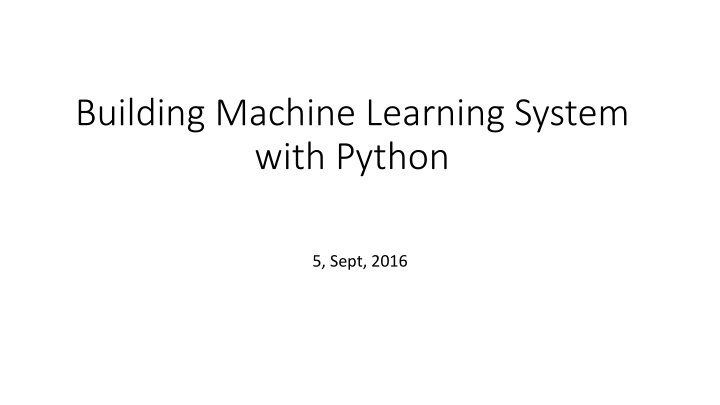
Python Machine Learning System Building with NumPy, SciPy, Matplotlib, and Scikit-learn
"Learn how to build a powerful machine learning system in Python using NumPy, SciPy, Matplotlib, and Scikit-learn. Explore tools, datasets, and techniques for developing models with high accuracy like logistic regression. Dive into data visualization, preprocessing, and enhance your skills for real-world applications."
Download Presentation

Please find below an Image/Link to download the presentation.
The content on the website is provided AS IS for your information and personal use only. It may not be sold, licensed, or shared on other websites without obtaining consent from the author. If you encounter any issues during the download, it is possible that the publisher has removed the file from their server.
You are allowed to download the files provided on this website for personal or commercial use, subject to the condition that they are used lawfully. All files are the property of their respective owners.
The content on the website is provided AS IS for your information and personal use only. It may not be sold, licensed, or shared on other websites without obtaining consent from the author.
E N D
Presentation Transcript
Building Machine Learning System with Python 5, Sept, 2016
Life is short you need Python -- Bruce Eckel
NumPy, SciPy, and Matplotlib NumPy and SciPy: Highly optimized storage and operation for multidimensional arrays, which are the basis data structure of most state-of-the-art algorithms. Matplotlib: One of the most convenient library to plot high-quality graph using Python.
Scikit-learn Scikit-learn is a marvelous machine learning toolkit in Python. http://scikit-learn.org/stable/install.html Getting started with Scikit-learn: http://scikit-learn.org/stable/tutorial/basic/tutorial.html
Installing Python Install Python, NumPy, SciPy, Scikit-learning, and etc. step by step. https://www.python.org/downloads/ Install Python distribution, such as Anaconda. https://www.continuum.io/downloads Recommended For those who favors an IDE, PyCharm is a powerful IDE for Python and scientific development. P.S. For consistency, we use Python 2.7.
References Python programming: Python official tutorial: https://docs.python.org/2/tutorial/index.html Stackoverflow! Machine Learning: Building Machine Learning Systems with Python. Willi Richert, Luis Pedro Coelho: library.ust.hk Cross Validated!
The first machine learning application
Dataset UC Irvine (UCI) Machine Learning Repository Iris dataset: Classify the flowers species using the following features. Sepal length. Sepal width. Petal length. Petal width.
Learning Logistic Regression Model Training Accuracy: 0.726667
Cross Validation Train-test split 5-Fold Cross Validation Training Testing
0 Fold Train Accuracy:0.716667, Test Accuracy:0.733333 1 Fold Train Accuracy:0.766667, Test Accuracy:0.633333 2 Fold Train Accuracy:0.783333, Test Accuracy:0.566667 3 Fold Train Accuracy:0.691667, Test Accuracy:0.866667 4 Fold Train Accuracy:0.741667, Test Accuracy:0.733333
From Logistic Regression to Support Vector Machine 0 Fold Train Accuracy:0.975000, Test Accuracy:0.966667 1 Fold Train Accuracy:0.966667, Test Accuracy:0.966667 2 Fold Train Accuracy:0.966667, Test Accuracy:0.966667 3 Fold Train Accuracy:0.983333, Test Accuracy:0.933333 4 Fold Train Accuracy:0.966667, Test Accuracy:1.000000 P.S.: from sklearn.svm import SVC
Parameter Tuning sklearn.svm.SVC C: Penalty parameter. Kernel: rbf, poly, linear. Degree: for polynomial kernel. Gamma: for rbf kernel. Etc. LogisticRegression C: Penalty parameter. penalty: l1 or l2. fit_intercept: solve: lbfgs, lblinear, netwon-cg. Etc. NEVER USE YOUR TEST DATA FOR TUNING
Resources LIBSVM and LIBLINEAR Chih-Jen Lin, National Taiwan University. Simple and easy-to-use support vector machines tool. Hsu, C.W., Chang, C.C. and Lin, C.J., 2003. A practical guide to support vector. classification. https://www.csie.ntu.edu.tw/~cjlin/papers/guide/guide.pdf SVMlight Thorsten Joachims, Cornell University. An implementation of Support Vector Machines (SVMs) in C. Vowpal Wabbit Microsoft Research and (previously) Yahoo! Research Fast and scalable tool for learning linear model. Mahout on Hadoop. MlLib on Spark. Petuum.
Play with more UCI datasets. archive.ics.uci.edu/ml Play with Tensorflow playground. playground.tensorflow.org

